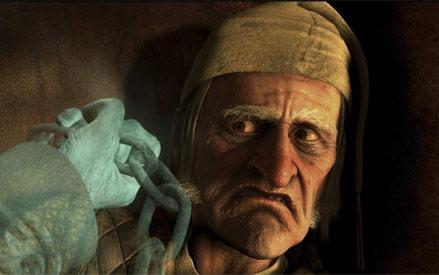A Christmas Carol (2009): A Visually Striking Retelling of Dickens' Classic
Released in 2009 and directed by Robert Zemeckis, A Christmas Carol is a visually ambitious animated adaptation of Charles Dickens’ timeless novella. Using cutting-edge performance-capture technology, the film stars Jim Carrey in a dynamic multi-role performance as Ebenezer Scrooge and all three of the Christmas spirits. This retelling balances the classic moral message with modern cinematic flair, offering audiences a haunting yet heartfelt experience that remains true to the original spirit of the story.
Set in Victorian London, the film follows Ebenezer Scrooge, a cold-hearted, miserly old man who despises Christmas and everything it represents. On Christmas Eve, he is visited by the ghost of his former business partner, Jacob Marley, who warns him that he will be doomed to wander the earth in chains unless he changes his ways. Marley tells him that he will be visited by three spirits: the Ghost of Christmas Past, the Ghost of Christmas Present, and the Ghost of Christmas Yet to Come. These spectral guides take Scrooge on a journey through his life, forcing him to confront the choices that have made him bitter and isolated.

What sets the 2009 version apart is its technical execution. Zemeckis, already known for pioneering work in digital filmmaking through movies like The Polar Express and Beowulf, uses performance-capture animation to create a richly detailed and immersive world. The streets of 19th-century London are rendered with dark beauty, and the ghostly encounters are brought to life with dramatic visual flourishes. The animation allows for surreal transitions, exaggerated expressions, and nightmarish sequences that make the supernatural elements of the story especially powerful.
Jim Carrey delivers a versatile and compelling performance, not only voicing but also physically performing as Scrooge at various ages and the three spirits. His portrayal of Scrooge is nuanced—moving from bitterness and cruelty to fear, remorse, and finally redemption. The supporting cast includes Gary Oldman as Bob Cratchit, Marley, and Tiny Tim, and Colin Firth as Scrooge’s cheerful nephew Fred. Each actor’s likeness is faithfully preserved through the motion-capture technique, lending a layer of realism to the animated characters.

While the film stays faithful to Dickens’ original language and themes, some viewers found its tone darker and more intense than expected—particularly for younger audiences. The horror elements, such as Marley's jaw falling open or the Grim Reaper-like Ghost of Christmas Yet to Come, are visually striking but can be unsettling. However, this darker tone reflects the original novella’s emphasis on morality and mortality, rather than shying away from them.
Despite mixed critical reviews—some praised the film’s ambition, while others critiqued its emotionally distant style—the film performed well commercially and has grown in appreciation over time. It stands out among the many adaptations of A Christmas Carol for its bold use of technology and its attempt to remain true to the gothic and reflective tone of Dickens’ work.

In the end, A Christmas Carol (2009) is a unique and visually captivating adaptation that reinforces the redemptive power of compassion and generosity. It brings Charles Dickens’ message to life with modern tools while staying faithful to the heart of the beloved classic.

-1751857133-q80.webp)
-1751861892-q80.webp)